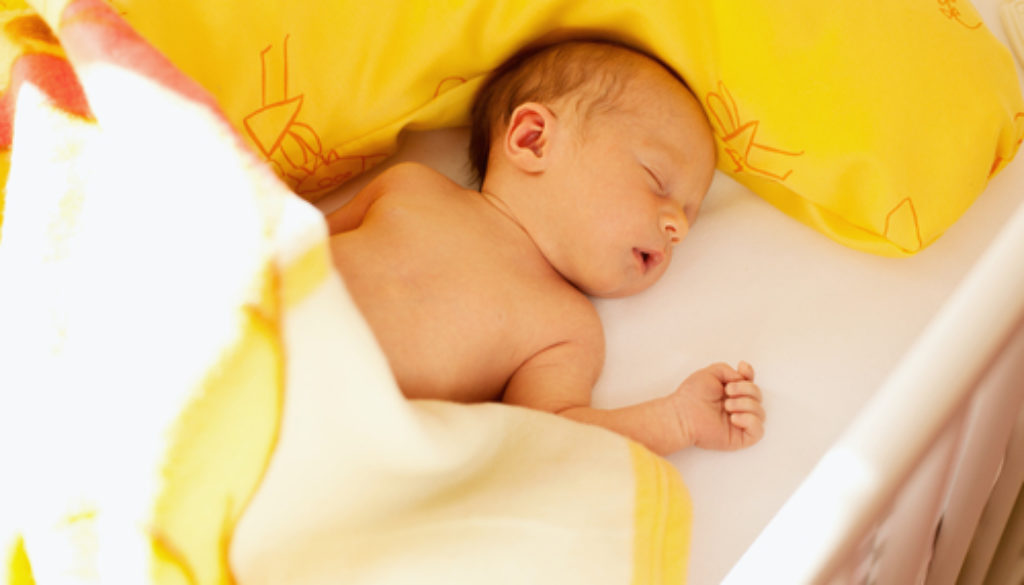Diapers and Pads May Be Leaching Chemicals Into Our Bodies
By Katie O’Reilly, Sierra Club
In her 1997 book Living Downstream, biologist, mother, and cancer survivor Sandra Steingraber compares the idea that as individuals, we can protect ourselves from environmental toxins to buying blueprints for bomb shelters. Steingraber writes that “few lifestyle sacrifices actually offer much real protection…. The sooner we quit trying to turn our bodies and homes into fortresses against toxic invasions, the sooner we’ll realize we have no choice but to rise up and demand an end to the invasion.”
Enter one of the most recent examples of everyday products leaving us vulnerable to toxic invasion: a study published last month in Reproductive Toxicology found that many name-brand diapers and sanitary pads contain volatile organic compounds (VOCs) and phthalates that are likely being absorbed via the genitals over time. Exposure to VOCs increases risk of asthma, certain cancers, and reproductive functioning. Phthalates, which are commonly found in cosmetics, toys, and other plastics, have been linked to endocrine disruption, cancer, and birth defects.
The study stems from a 2017 investigation by South Korean TV media outlets into whether sanitary pads might be causing menstrual irregularities, infection, rashes, and intensified cramping. Its authors, who studied 11 undisclosed major sanitary pad brands and four diaper brands, wrote, “The physical location of the exposure site, the high absorption rate of the genitalia for chemicals, and the long-term exposure period demand a thorough investigation on the potential impact of the exposure to VOCs and phthalates.”
The findings are triggering broader conversations about societal attitudes towards women’s reproductive health. Alexandra Scranton, director of science and research for Women’s Voices for the Earth, a nonprofit that works to eliminate toxins that harm women’s health, points out that it’s telling that this all started as a media investigation. “The NIH [National Institute of Health] hadn’t even sponsored any research into vaginal or vulval health since the 1980s,” Scranton says. “Cultural taboos have a lot to do with how things get funded and researched. For instance, when it comes to menstrual products, the question of whether feeling miserable a few days out of the month might have something to do with the products women use has never been explored from a scientific perspective.” She adds that industry studies into manufacturers’ products are limited, tend to only look at potential exposure from the top layer of pads and diapers, and often don’t take into account chemicals’ long-term volatility.
Scranton predicts the diapers component, however, will likely bring more urgent attention to this particular study. “Kids are so small that less exposure can lead to higher levels of concern,” she says. “And there’s lots of crossover in terms of the synthetic plastics and technology that goes into making these products—many of the same companies make both [diapers and pads].”
Regardless, the larger problem remains, which is that the task of preventing additional exposure will probably fall not on product manufacturers, but on women themselves. “This type of information often gets put out there in a way that’s disempowering and puts women at the frontlines of yet another toxin issue that could affect their families,” says Sonya Lunder, senior toxics advisor for the Sierra Club’s Gender, Equity & Environment program. “It stands to increase moms’ anxiety, yet this isn’t a ‘new chemical scare every day’ problem, but rather a ‘things are broken’ problem that affects the women and caregivers in charge of taking care of everyone. We need to end the scaremongering and distractions, and fix the problem in a bigger way.”
The U.S. regulatory system has a long way to go toward that end, but in the meantime, Women’s Voices for the Earth is pulling together data gleaned from various tests of pads and diapers—Scranton says the governments of France, Sweden, and Finland have funded studies—and will eventually publish a consumer buying guide. However, she notes that hormone disruptors are particularly tricky because they don’t always cause an immediate and visible reaction. “They’re so difficult to diagnose,” she says. “Consumer shopping guides can’t always account for the types and timings of changes, and the types of people who end up affected.”
As for tightening the regulatory system, Scranton notes that some progress is being made— a pending bill in New York, for example, would require disclosure of ingredients in menstrual products. “It’s a gradual process for sure, but raising awareness of consumers’ concerns around chemical exposure should encourage companies to do more to provide informed consent.”
Overall, Lunder points out, capitalism isn’t very conducive to large-scale, communal fixes for problems like these. “When we don’t change how pesticides, for instance, are regulated, but tell people to control their own environments, we put the onus on the individual,” she says. “We don’t have the infrastructure of insurance, healthcare, or a safety net for people most vulnerable to the impacts of toxins.”
In other words, the only real way to protect ourselves from toxic exposure is to demand an end to the invasion.

